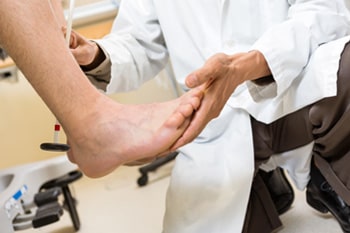
A podiatrist is a doctor who focuses on problems with the feet, ankles, and lower legs. They treat injuries from sudden accidents and those caused by overuse, as well as common issues and long-term pain. They also handle foot and ankle problems related to diseases like diabetes, circulation issues, and arthritis.
Podiatrists can prescribe medicines, order tests, and take images to diagnose issues. They can also analyze how you walk and give you special shoe inserts for support. Some podiatrists are surgeons, so they can fix broken bones and do different kinds of surgeries, from small cuts to more extensive operations.
A Podiatrist’s Education and Training
To become a podiatrist, you start by getting a bachelor's degree in a science subject like biology or chemistry. Then, you go to podiatry school for four years to earn a Doctorate of Podiatric Medicine degree. After that, you do three more years of training in a hospital residency, where you learn advanced skills in foot and ankle surgery. Some podiatrists might continue their training even further, while others start working in their own practice.
What Conditions Does a Podiatrist Treat?
The majority of podiatrists will manage various conditions affecting individuals of all age groups, such as:
- Heel pain
- Deformities of the foot like hammertoes and bunions
- Nail-related disorders
- Issues stemming from diabetes, such as wounds and ulcers
- Arthritis
- Conditions affecting the feet and ankles in children
- Conditions affecting the feet and ankles in older adults
- Morton’s neruoma
- Injuries
A Visit to the Podiatrist
Your first appointment with the podiatrist starts with talking about your medical history and any symptoms you're having. Then, they'll do a physical exam, which might include watching how you walk and checking how well your joints move. Some conditions can be figured out right away, but others might need lab tests or imaging scans to confirm.
Podiatrists treat problems using different methods like traditional treatments, special shoe inserts, medicines, physical therapy, and even advanced techniques like lasers or shockwave therapy. If the simpler treatments don't work, they might suggest surgery to fix the problem.

